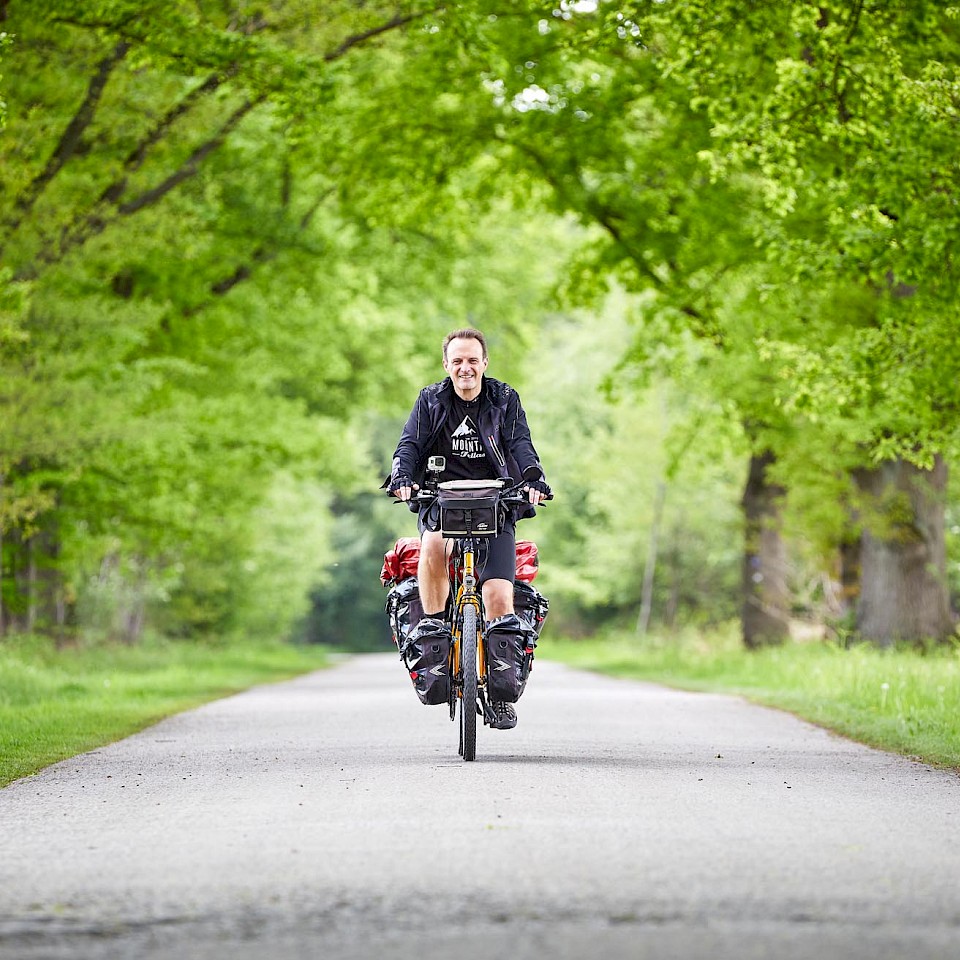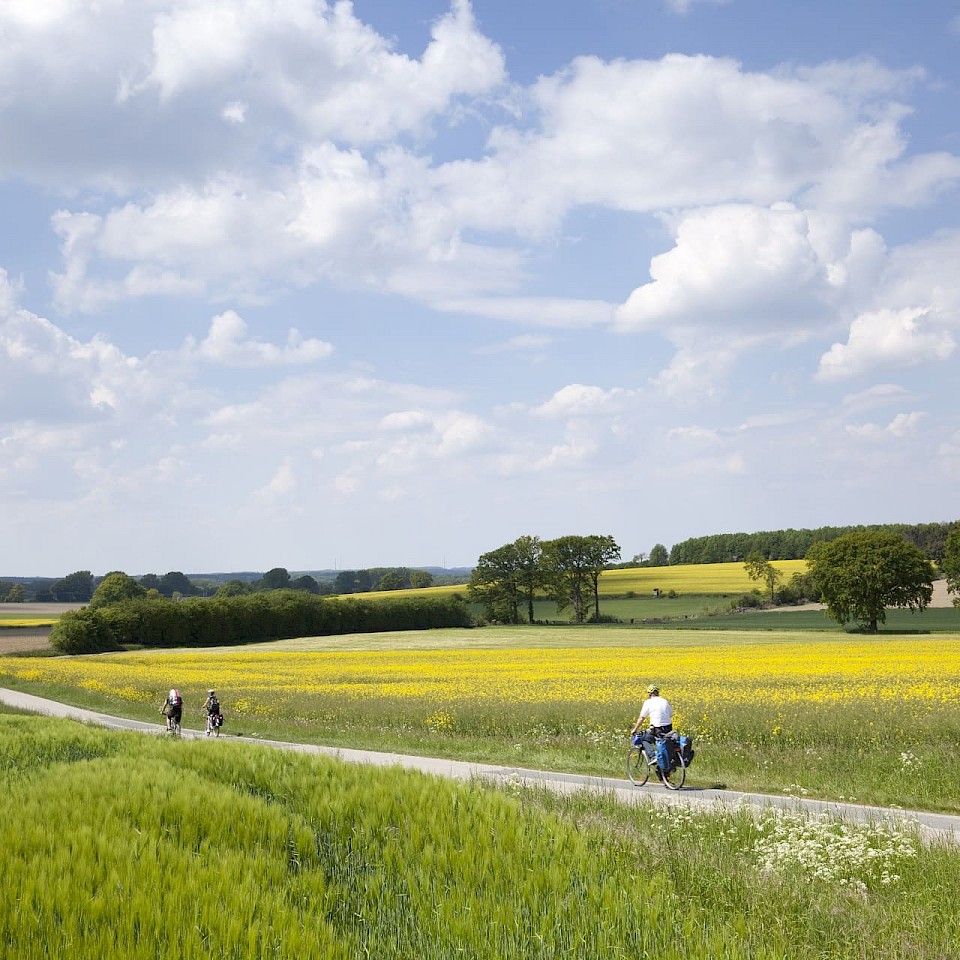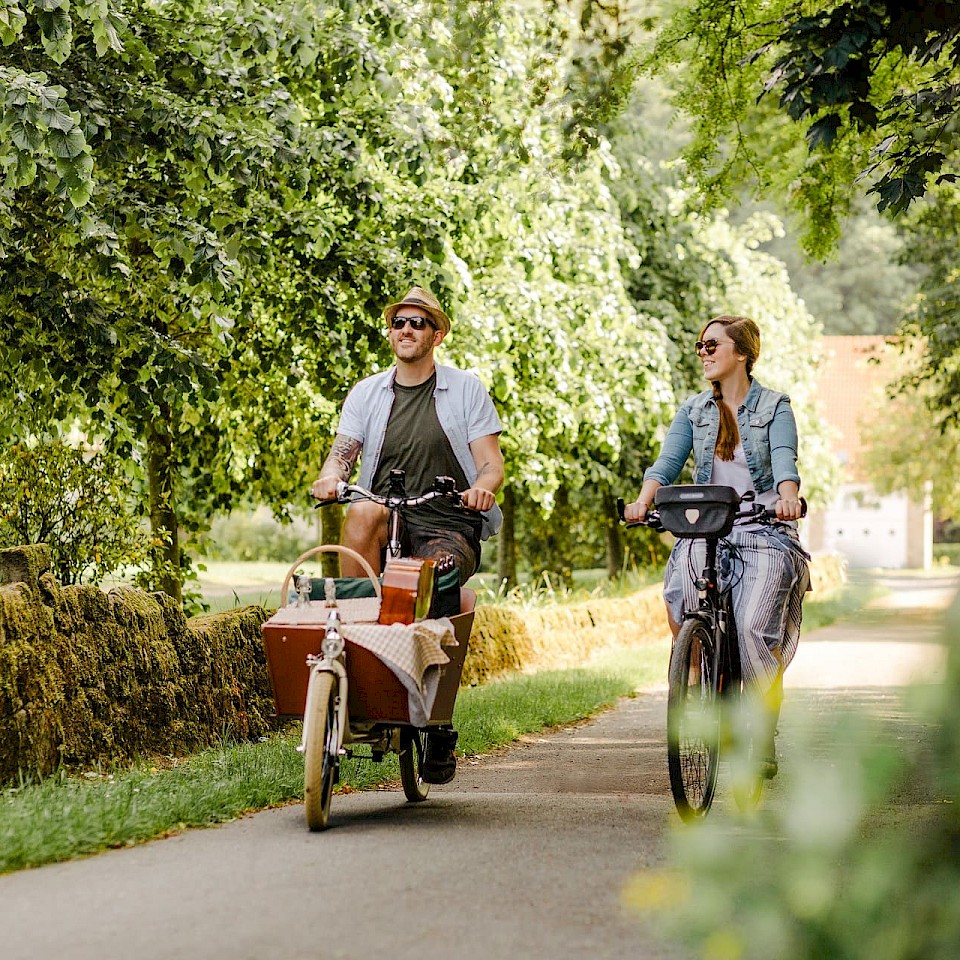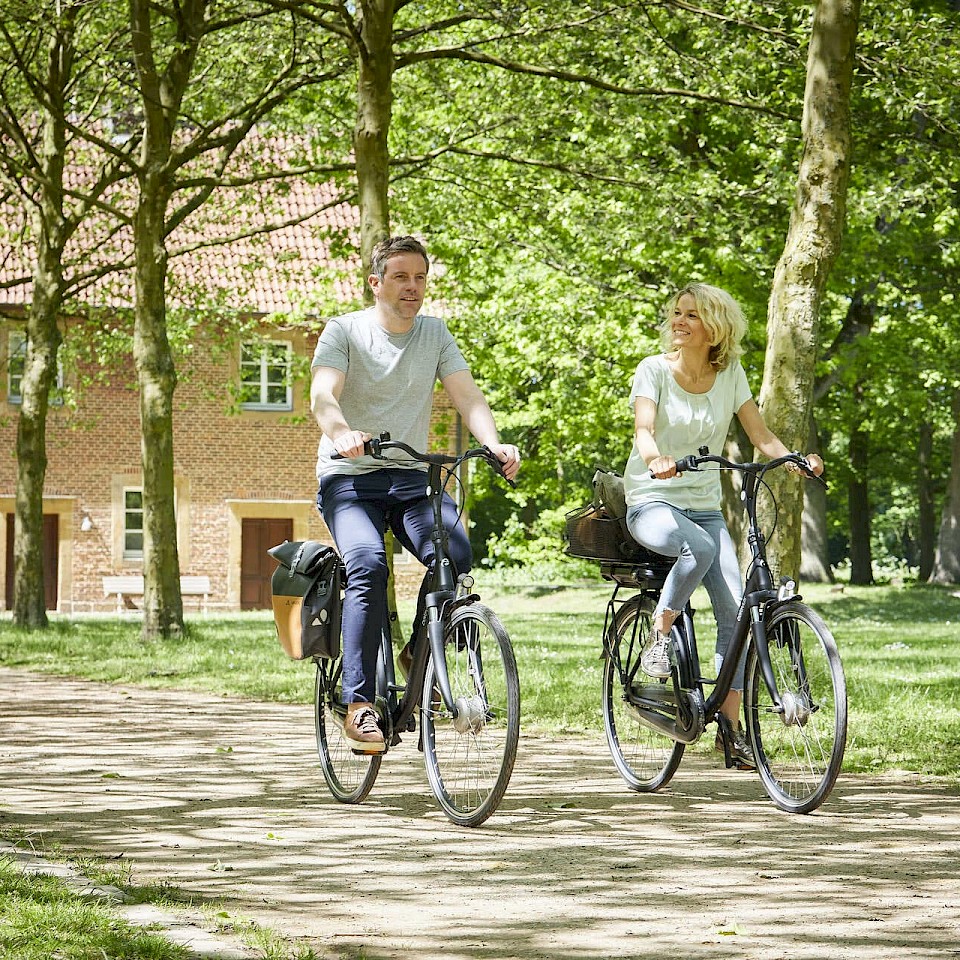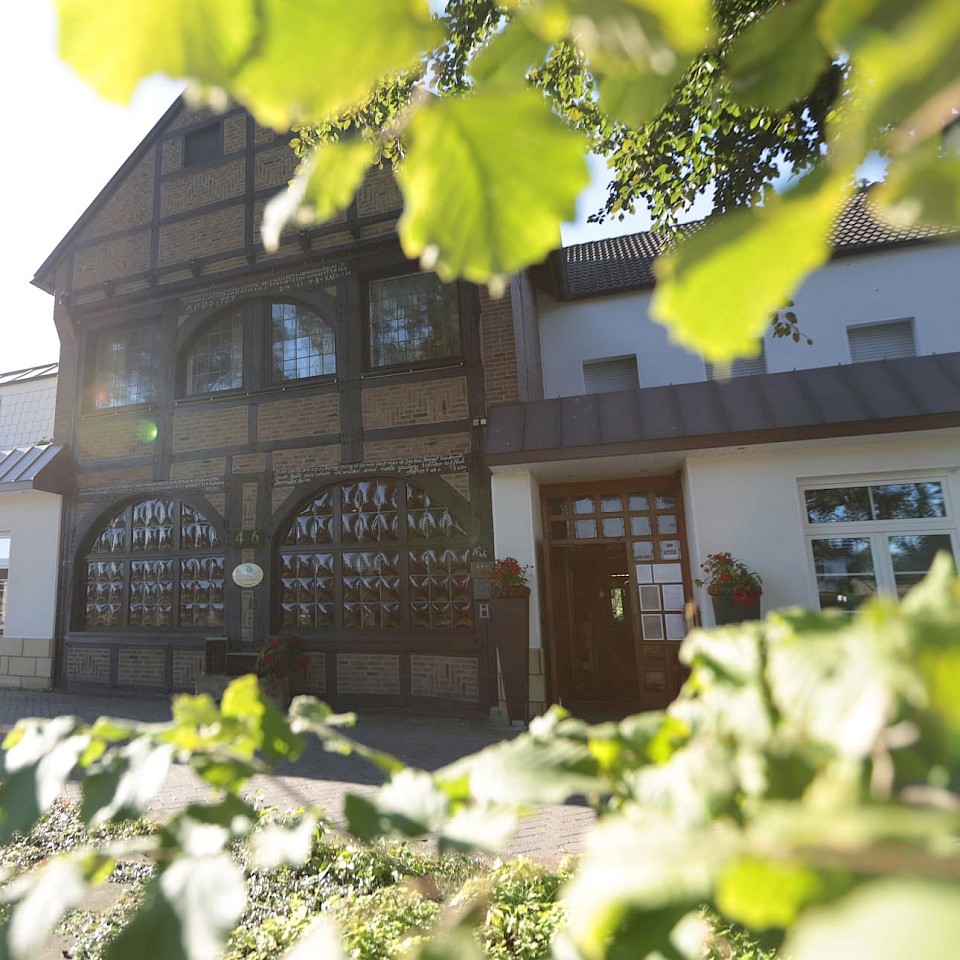
© Europaradweg R1_D3/Thomas Koy
Castles, fortresses, idyllic countryside
On the R1 European cycle route from Zwillbrock to Münster
If you only want to cycle a small section of the R1 European Cycle Route, the so-called "cultural stories" could be just right for you. They combine thematically matching, consecutive stages and can be cycled as day tours for two to three days. As the name suggests, the routes take you past regional cultural highlights and historical sites.
Cycle comfortably along idyllic paths in western Münsterland on the "Palaces, castles, country idyll" stage. The flat Münsterland parkland makes cycling particularly pleasant. Along the way, you will pass impressive palaces and castles, historic aristocratic residences and farmsteads.
Let yourself be inspired
History and nature on your way
Get on your bike - or as we say here: Leeze! You can clearly see the love of cycling in Münsterland. The region with its park-like character is simply made for it: a beautiful, flat cultivated landscape with fields, meadows, pastures and farms. Hedgerows, avenues and small farm woods separate the fields from one another.
But the Münsterland is not just a cycling region, it is also a region of castles. Why are there so many of them here? Until the Congress of Vienna in 1814/15, there were countless small dominions, most of which also had prestigious manor houses thanks to the fertile soil. A little pomp and splendour was a must.
Some of the imposing estates are still inhabited today or are used as educational or administrative centres. Others are waiting to bring their often exciting history back to life during a visit. And you'll have plenty of opportunities to do so on the way to Münster!
Video | Castles, fortresses, idyllic countryside
Highlights of this cultural history

© Europaradweg R1_D3/Thomas Koy
Flamingos in the Münsterland? That's right! In the 1980s, a small population settled in the Zwillbrocker Venn. As a former raised bog with wet meadows, moorland and heathland as well as large, shallow lakes, the fens offer ideal conditions for the pink exotics. They are presumably refugees from animal parks or private holdings, which today form the world's northernmost breeding colony here. In the nature reserve, they live in good company with more than 140 species of breeding and migratory birds, some of which are very rare. From March to September, you can observe the flamingos in the wild before they move on to their Dutch wintering grounds in autumn.

© Europaradweg R1_D3/Thomas Koy
Wide fields with large hedgerows, small woods, picturesque little rivers, fairytale castles made of sandstone and predominantly flat routes await you when cycling in the beautiful Münsterland parkland. It is a cultural landscape that has developed through centuries of agricultural use. A landscape that is perfect for carefree cycle tours.

© Europaradweg R1_D3/Thomas Koy
Hülshoff Castle near Havixbeck is a typical Westphalian moated castle from the 16th century. Surrounded by moats and a beautiful park, it is a popular excursion destination. It is also the birthplace of Annette von Droste-Hülshoff, one of the most important German-speaking poets of the 19th century. Today, the castle is home to the Droste Museum, the Centre for Literature and a restaurant. You can find out more about Droste's life in the museum.

© Münsterland e.V./Philipp Fölting
Droste spent the second half of her life here: in the beautiful country house Haus Rüschhaus near Münster. After the death of her father in 1826, she moved with her mother and sister to the former summer residence, which was designed by the Westphalian master builder Johann Conrad Schlaun. Famous works such as "The Jew's Beech" were written here. Today, you can discover the poet's living quarters as part of a guided tour. The baroque gardens surrounding the country house are just as worth seeing.

© Europaradweg R1_D3/Thomas Koy
Here at Prinzipalmarkt, Münster's cityscape is at its most beautiful. The life of the university city pulsates beneath the picturesque arcades and on the streets. Just a few metres away, the cathedral, the Erbdrostenhof, St. Lambert's Church and countless other sights and cultural institutions entice you to visit the city.
Cultural history at a glance
- 113 km
- Route tour
- easy
- signposted
- Multiday tour
- Castles/Nature
- Vreden
- Stadtlohn
- Coesfeld
- Billerbeck
- Havixbeck
- Münster







